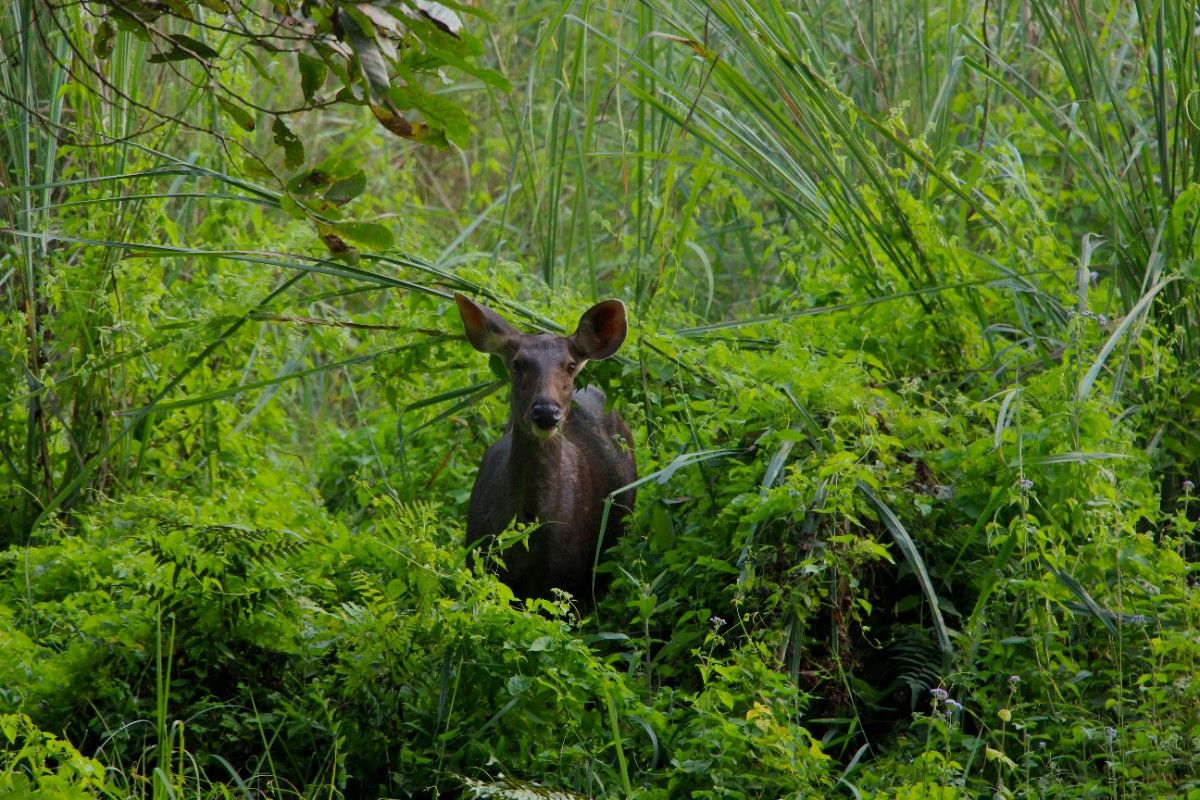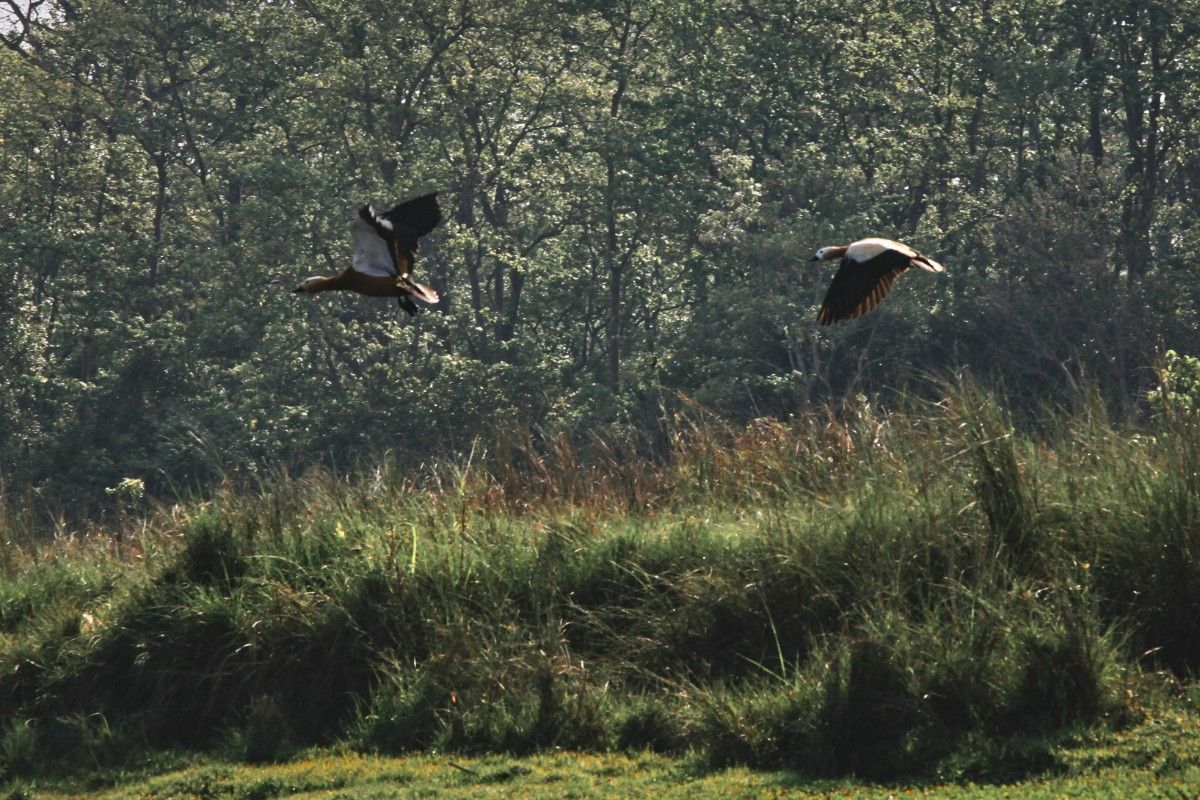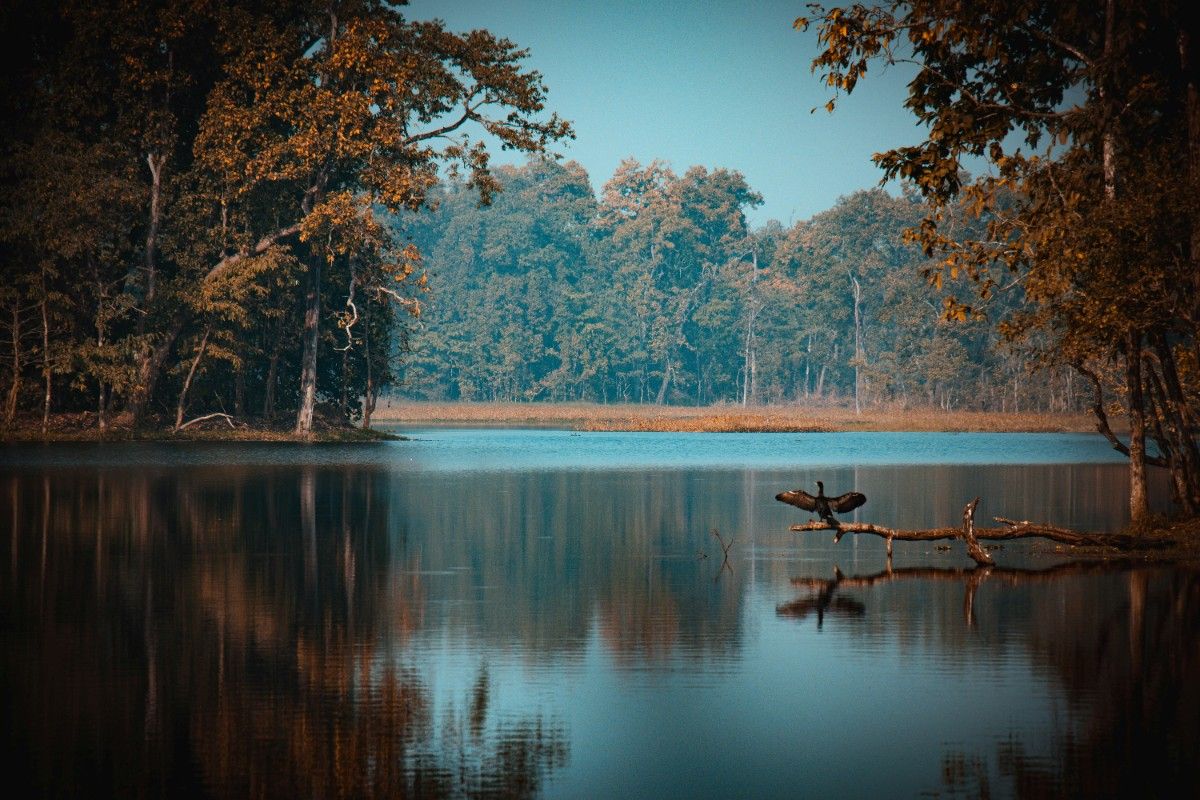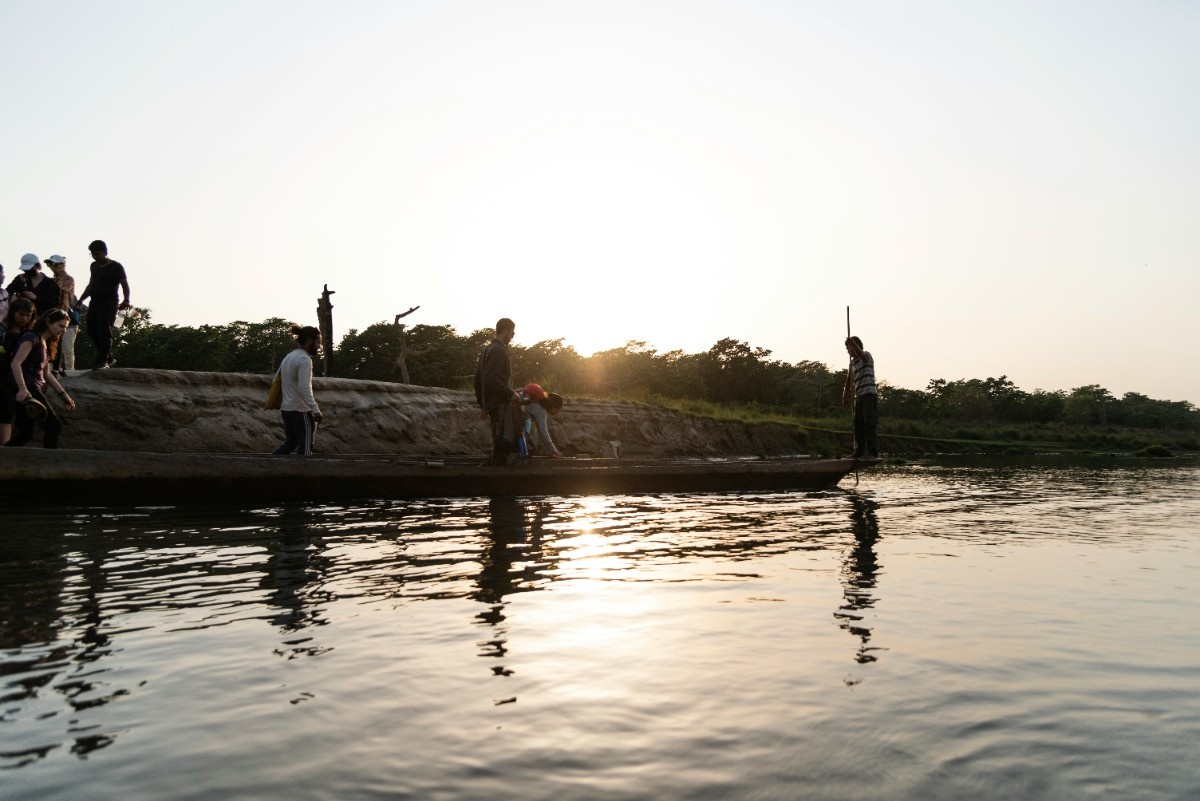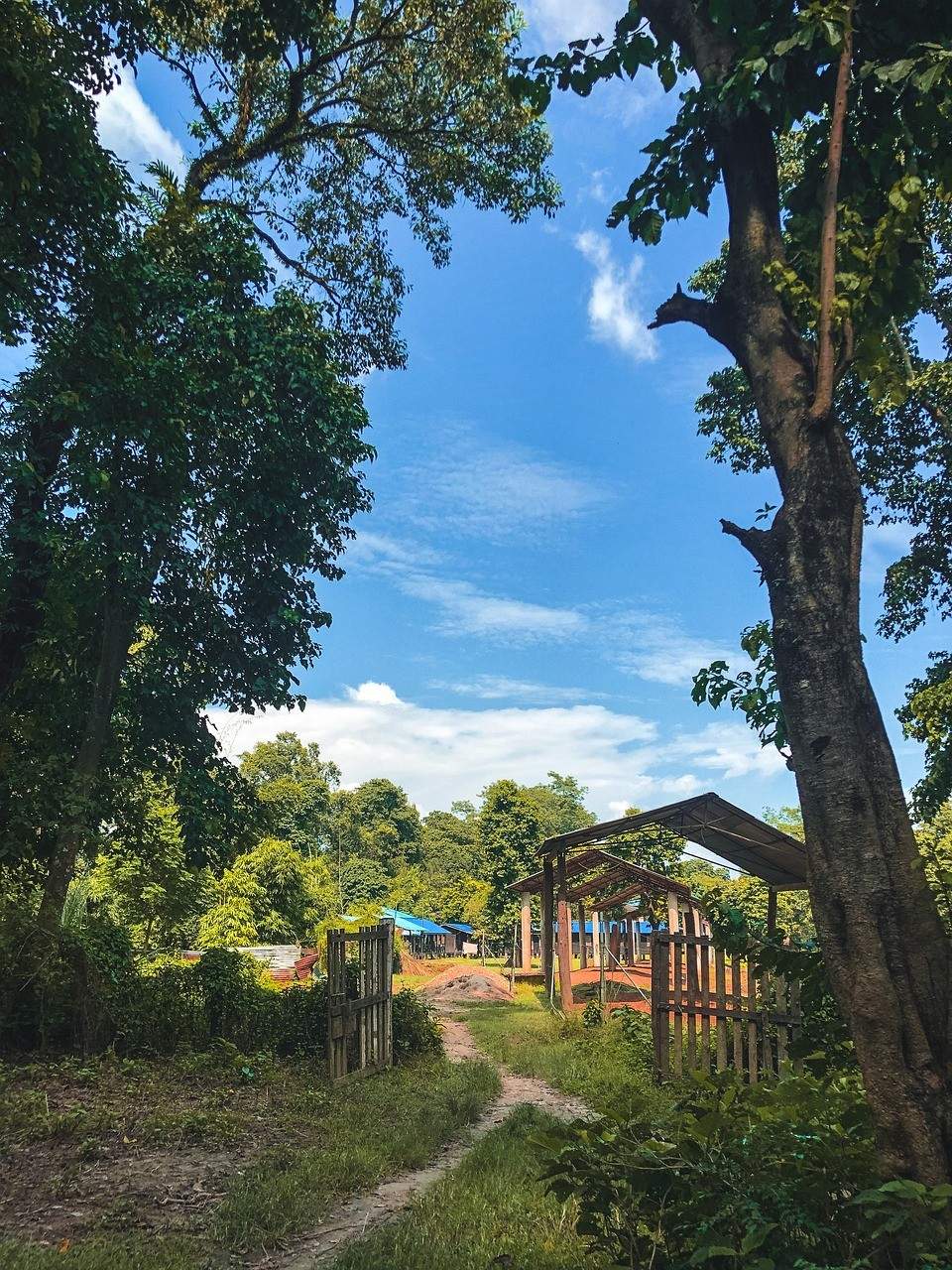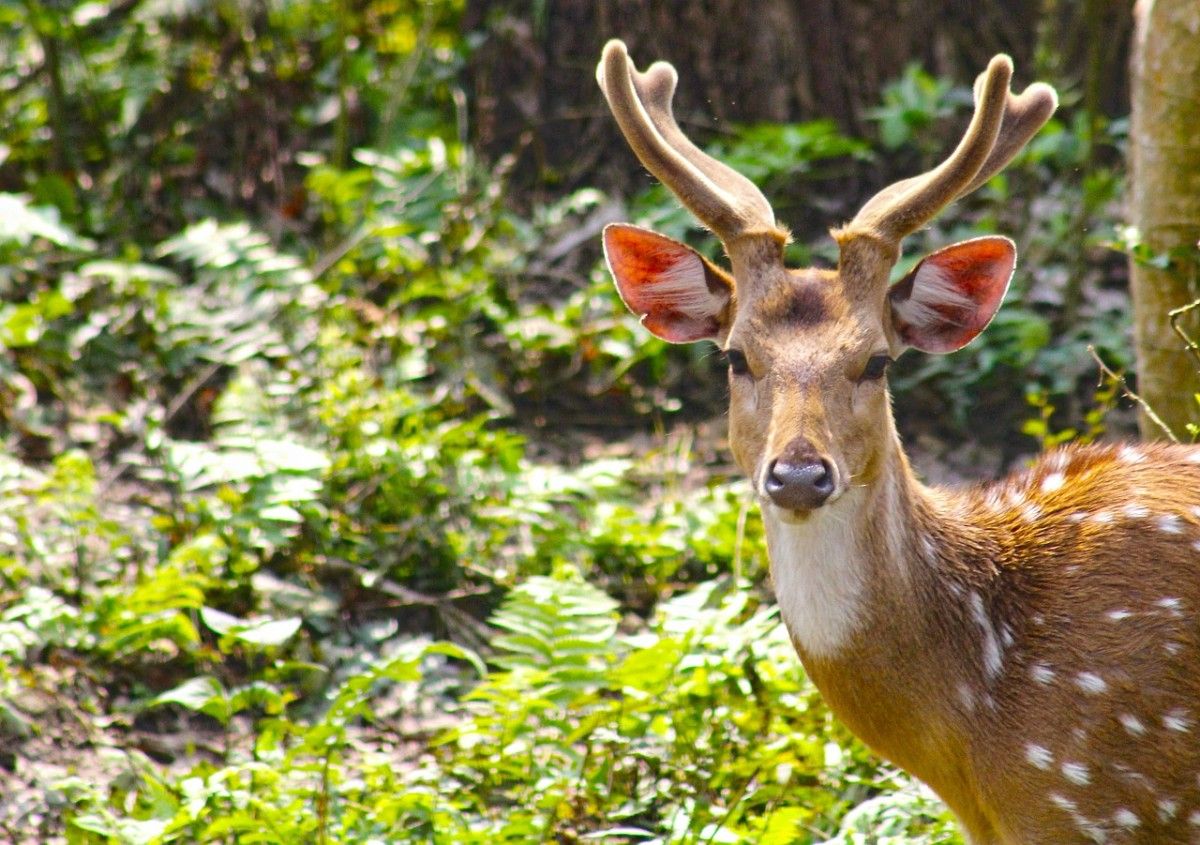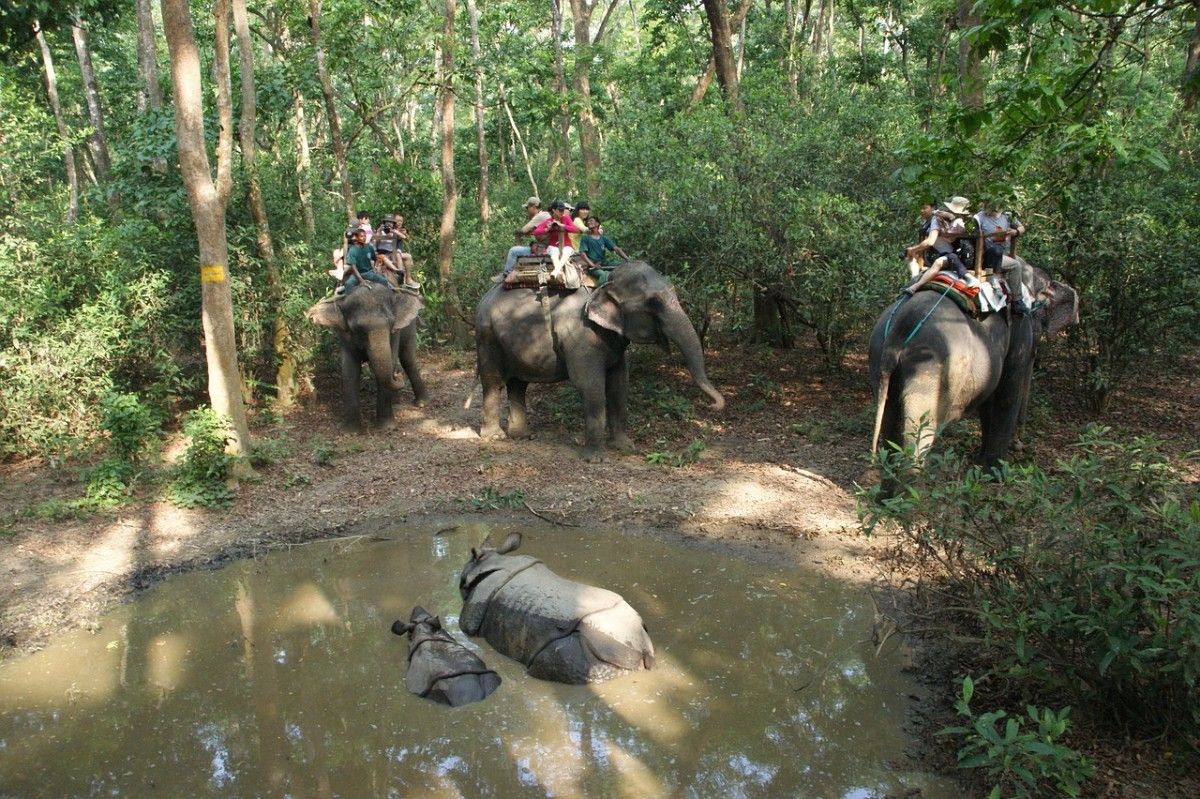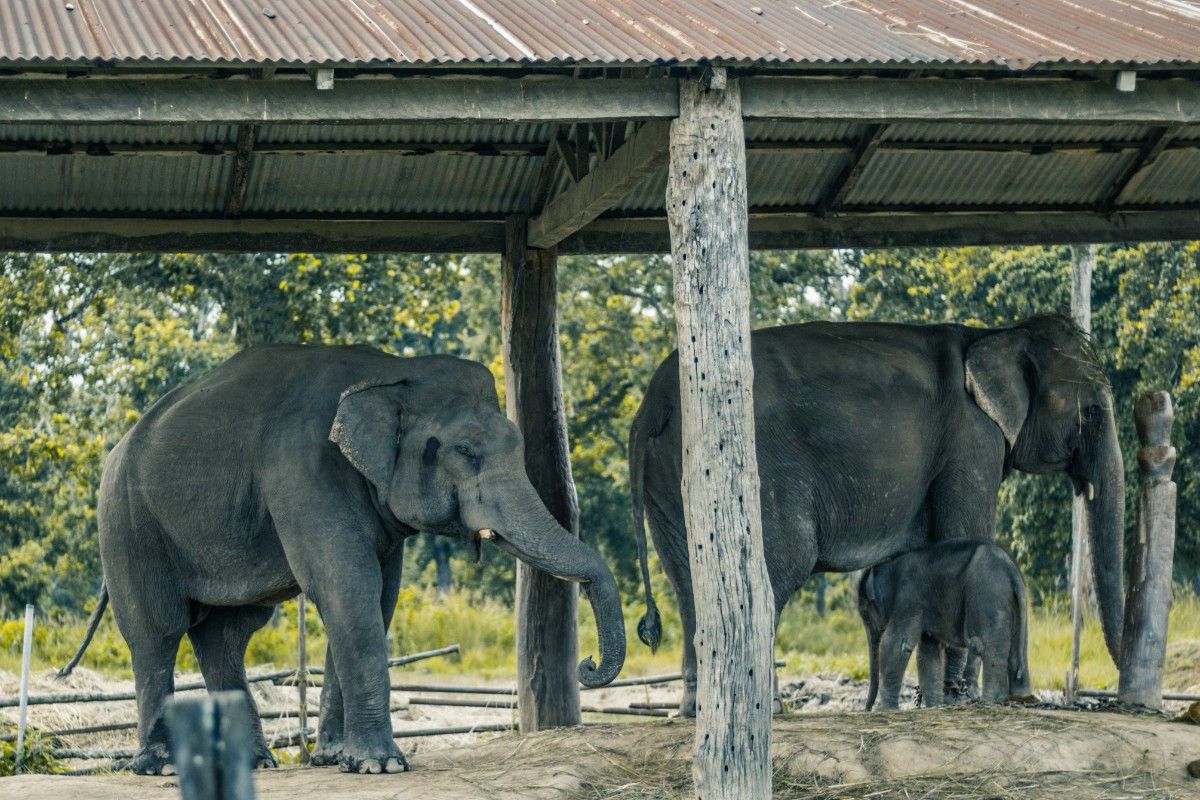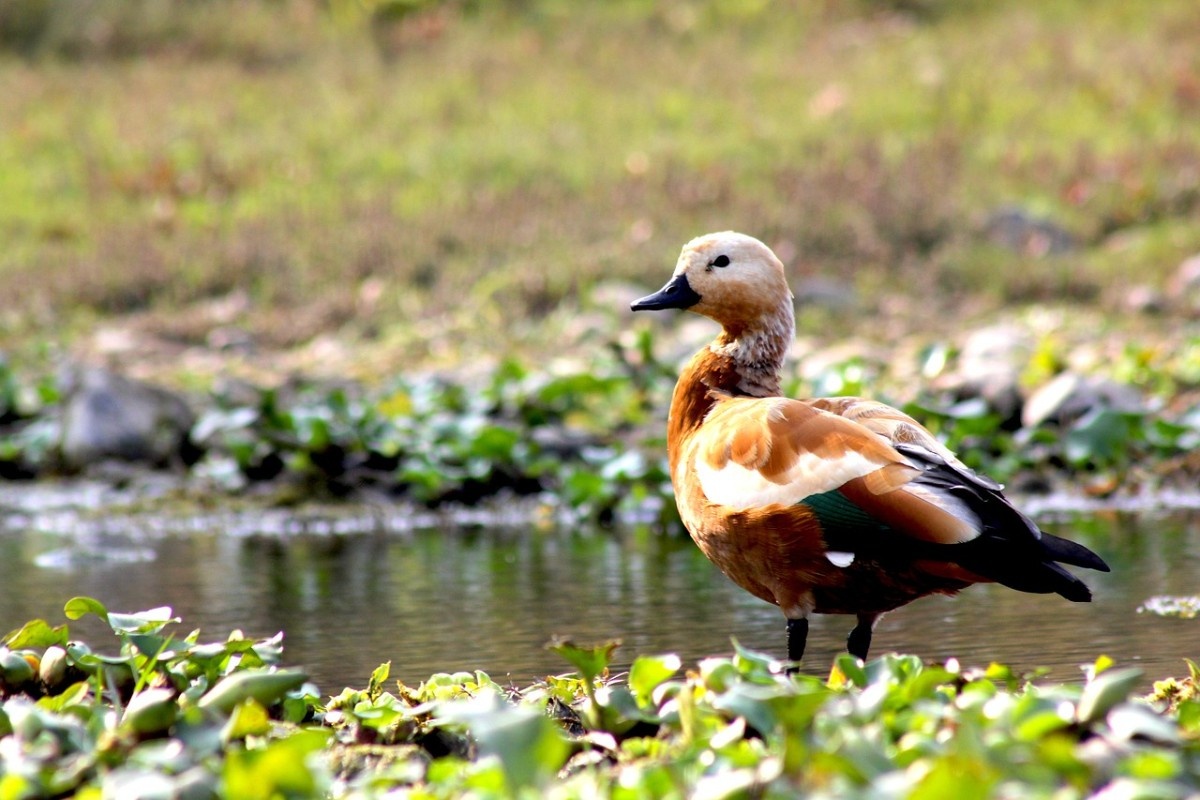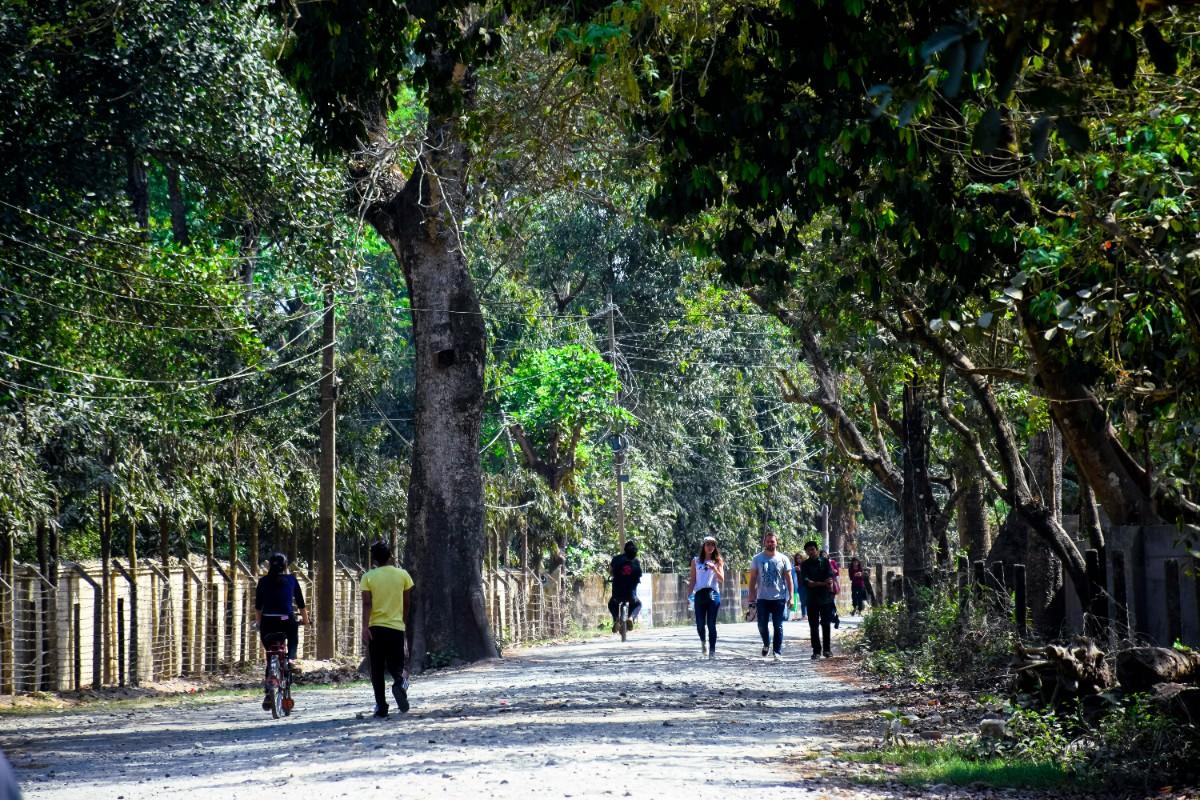Introduction to Chitwan National Park
Overview
Chitwan National Park, a UNESCO World Heritage Site, is a stunning wilderness located in the subtropical lowlands of south-central Nepal. Established in 1973, this park covers an impressive 952.63 square kilometres and is renowned for its extraordinary biodiversity. The name "Chitwan" translates to "Heart of the Jungle" in Nepali, aptly describing the park's lush forests, grasslands, and rivers that serve as a sanctuary for numerous endangered species.
Nestled in the Terai region of Nepal, Chitwan National Park is a paradise for wildlife enthusiasts, nature lovers, and adventure seekers. Its unique ecosystem supports a wide range of habitats, from dense sal forests to grasslands and riverine forests along the banks of the Rapti, Reu, and Narayani Rivers. The park's rich biodiversity showcases the success of conservation efforts undertaken by the Nepalese government and various international organisations.
One of the most remarkable features of Chitwan National Park is its thriving population of one-horned rhinoceroses. The park is home to the second-largest population of this endangered species in the world, with over 600 individuals roaming its grasslands and forests. Visitors have the incredible opportunity to witness these majestic creatures in their natural habitat, an experience that is both humbling and awe-inspiring.
Location and Geography
Chitwan National Park is located in the southern part of Nepal, spanning across the districts of Nawalparasi, Parsa, Chitwan, and Makwanpur. The park lies at the foot of the Himalayas, with elevations ranging from 100 meters to 815 meters above sea level. The park's geographical coordinates are 27°16'56" to 27°42'13" North latitude and 83°50'23" to 84°46'25" East longitude.
The park is situated in the Terai-Duar savanna and grasslands ecoregion, which is characterised by tall grasslands, savannas, and subtropical moist broadleaf forests. The Rapti, Reu, and Narayani Rivers flow through the park, creating a network of floodplains and riverine habitats that support a wide variety of aquatic and terrestrial species.
The park's terrain is primarily flat, with a few hills rising up to 800 meters in the Churia range. The Churia hills act as a natural barrier between the park and the human settlements to the north, helping to maintain the park's ecological integrity. The park's headquarters is located in Kasara, which is easily accessible from the nearby town of Sauraha.
Significance and Recognition
Chitwan National Park is not only a national treasure but also a site of global significance. In 1984, the park was designated as a UNESCO World Heritage Site, recognising its outstanding universal value and the importance of preserving its unique biodiversity for future generations. The park's success in conservation serves as an inspiration for wildlife protection efforts worldwide, demonstrating the positive impact that dedicated management and community involvement can have on the natural environment.
The park is also a Ramsar site, highlighting the importance of its wetland habitats for the conservation of aquatic biodiversity. The Beeshazar and Associated Lakes, located within the park, were designated as a Ramsar site in 2003, recognising their role in supporting a wide variety of waterfowl and aquatic species.
Chitwan National Park has received numerous accolades for its conservation efforts, including the "Tiger Conservation Excellence Award" in 2017 for its successful management of tiger habitats and population recovery. The park's achievements in rhino conservation have also been widely recognised, with the population of one-horned rhinoceroses increasing from around 100 individuals in the 1960s to over 600 today.
Getting to Chitwan National Park
By Air
The quickest and most convenient way to reach Chitwan National Park is by air. The nearest airport is Bharatpur Airport, located approximately 20 kilometres from the park's main entrance. Several domestic airlines operate daily flights from Kathmandu to Bharatpur, with a flight duration of about 20 minutes.
Upon arrival at Bharatpur Airport, visitors can take a taxi or pre-arranged transportation to reach their accommodation near the park. Many hotels and resorts in Chitwan offer complimentary shuttle services from the airport to their properties, making the journey hassle-free for guests.
By Road from Kathmandu
Another popular option to reach Chitwan National Park is by road from Kathmandu, the capital city of Nepal. The journey covers a distance of approximately 175 kilometres and takes around 5 to 6 hours, depending on traffic and road conditions.
Visitors can choose from several options for road travel:
Private Car or Taxi: Renting a private car or taxi offers flexibility and comfort, allowing visitors to travel at their own pace and make stops along the way. Many car rental companies and taxi services in Kathmandu offer trips to Chitwan National Park.
Tourist Bus: Several tourist bus services operate daily between Kathmandu and Sauraha, the gateway town to Chitwan National Park. These air-conditioned buses depart from the tourist bus station in Kathmandu and offer a comfortable journey with designated stops for meals and refreshments.
Public Bus: For budget-conscious travellers, public buses are the most economical option. Buses depart regularly from Kathmandu's Balaju, Kalanki, and Saurava bus stations. While this option may be less comfortable than private transportation or tourist buses, it offers an opportunity to interact with locals and experience authentic Nepalese life.
By Road from Pokhara
For those travelling from Pokhara, a popular tourist destination in central Nepal, the journey to Chitwan National Park by road is approximately 145 kilometres and takes around 4 to 5 hours. Visitors can opt for private transportation, tourist buses, or public buses, similar to the options available from Kathmandu.
The road journey from Pokhara to Chitwan offers scenic views of the Nepalese countryside, with lush green forests, rolling hills, and charming villages along the way. Many travellers combine their visit to Chitwan National Park with a trip to Pokhara, as both destinations offer unique natural and cultural experiences.
Transportation within the Park
Once visitors arrive at their accommodation near Chitwan National Park, there are several options for exploring the park and its surroundings:
Jeep Safari: Guided jeep safaris are a popular way to venture deep into the park and spot various wildlife species. These safaris are organised by the park authorities and many hotels and resorts in the area, offering half-day or full-day options.
Walking Tours: Guided walking tours, led by experienced naturalists, offer an immersive experience and the opportunity to explore the park's diverse habitats on foot. These walks provide a chance to learn about the park's flora and fauna and spot smaller wildlife species that may be missed during vehicle-based safaris.
Elephant Rides: Although controversial due to animal welfare concerns, elephant rides have been a traditional way to explore the park. However, many lodges and tour operators have phased out this activity in favour of more eco-friendly alternatives.
Canoe Rides: Guided canoe rides along the Rapti River offer a unique perspective on the park's aquatic life and birdlife. These peaceful excursions provide a chance to spot crocodiles, water birds, and even the elusive Gangetic dolphin.
Best Time to Visit Chitwan National Park
Seasonal Overview
The best time to visit Chitwan National Park is during the dry season, which spans from October to March. This period offers the most favourable weather conditions for wildlife viewing and outdoor activities. The park experiences minimal rainfall during these months, making it easier to explore the trails and spot various animal species in their natural habitats.
The dry season can be further divided into two sub-seasons:
Cool Dry Season (October to November): This period immediately follows the monsoon season, and the park's vegetation is lush and green. The rivers are full, attracting an array of wildlife to the water sources. Migratory birds begin to arrive in the park, making it an ideal time for birdwatching enthusiasts.
Warm Dry Season (December to March): As the temperatures gradually rise, the vegetation becomes less dense, improving the chances of spotting wildlife. The park's grasslands, known as "phantas," are set ablaze in a controlled manner to promote new growth, attracting grazing animals like deer and rhinos.
Monsoon Season (June to September)
The monsoon season, lasting from June to September, is the least popular time to visit Chitwan National Park. Heavy rainfall and high humidity levels can make outdoor activities challenging and less enjoyable. Some lodges and hotels may close during this period due to the weather conditions and reduced accessibility.
However, the monsoon season has its own unique charm. The park transforms into a lush green paradise, and the rain-fed rivers and streams attract a variety of aquatic birds. The occasional break in the showers can provide memorable moments of wildlife sightings, especially for those interested in birdwatching or photographing the park's dramatic landscapes.
Peak Tourist Seasons
Chitwan National Park experiences two peak tourist seasons:
Autumn Peak Season (October to November): This season coincides with the beginning of the dry period and is popular among visitors who want to experience the park's lush post-monsoon landscapes. The Chitwan Elephant Festival, held in Sauraha in late December, is another attraction during this time.
Spring Peak Season (February to April): As the temperatures start to rise, the park's vegetation begins to thin out, making it easier to spot wildlife. This season is popular among visitors who prefer warmer weather and clearer skies. Many hotels and lodges offer special packages and activities during this time to attract visitors.
Shoulder Seasons (December to January and May)
The shoulder seasons, which include December to January and May, offer a balance between favourable weather conditions and fewer crowds. While the temperatures may be slightly cooler in December and January or warmer in May, these months can still provide excellent opportunities for wildlife viewing and outdoor activities.
Visitors during the shoulder seasons may benefit from lower prices and more availability in hotels and lodges, as well as a more peaceful experience in the park due to fewer tourists.
Accommodations in Chitwan National Park
Chitwan National Park offers a wide range of accommodation options to suit different budgets, preferences, and travel styles. From luxurious resorts to cosy lodges and eco-friendly camps, visitors can find the perfect base for their adventures in the park.
Luxury Resorts
For those seeking a high-end experience, Chitwan National Park has several luxury resorts that offer top-notch amenities and services. These resorts often feature spacious rooms with modern comforts, swimming pools, spa facilities, and gourmet dining options. Some popular luxury resorts include:
Taj Meghauli Serai: This upscale resort offers elegantly designed rooms and villas, a spa, and a range of curated wildlife experiences led by expert naturalists.
Barahi Jungle Lodge: Set on the banks of the Rapti River, this luxury eco-lodge features well-appointed rooms, a swimming pool, and a range of safari activities.
Meghauli Serai: This Taj Safari property offers a blend of contemporary luxury and wilderness experiences, with stylish rooms, a spa, and a focus on sustainable tourism practices.
Mid-Range Hotels and Lodges
For those with a moderate budget, Chitwan National Park has a selection of comfortable hotels and lodges that offer a balance between affordability and amenities. These properties typically feature well-appointed rooms, on-site restaurants, and a range of safari activities. Some popular mid-range options include:
Jungle Safari Lodge: This lodge offers comfortable rooms, a swimming pool, and a range of jungle activities, including elephant safaris and nature walks.
Tigerland Safari Resort: Located in Sauraha, this resort features cozy rooms, a restaurant serving local and international cuisine, and a variety of safari options.
Chitwan Safari Lodge: This eco-friendly lodge offers comfortable accommodations, a restaurant, and a range of activities, including jeep safaris and cultural visits to local villages.
Budget-Friendly Guesthouses and Camps
For budget-conscious travellers, Chitwan National Park has several guesthouses and tented camps that offer basic but clean accommodations at affordable prices. These options are perfect for backpackers and those who prefer a more rustic experience. Some popular budget-friendly choices include:
Gaida Wildlife Camp: This tented camp offers a unique wilderness experience, with simple but comfortable tents, a restaurant, and a range of safari activities.
Jungle World Resort: Located in Sauraha, this resort offers budget-friendly rooms, a restaurant, and a variety of jungle activities.
Machan Paradise View Lodge: This eco-friendly lodge features basic but comfortable rooms, a restaurant, and a range of safari options.
Community-Based Lodges and Homestays
For travellers interested in a more immersive and authentic experience, Chitwan National Park has several community-based lodges and homestays. These accommodations are run by local communities and offer a unique opportunity to learn about the traditional way of life and culture of the indigenous Tharu people. Some popular community-based lodges include:
Tharu Community Homestay: This homestay program allows visitors to stay with local Tharu families, participate in daily activities, and learn about their culture and traditions.
Barauli Community Homestay: Located in a traditional Tharu village, this homestay offers simple but clean accommodations, home-cooked meals, and a chance to experience local life.
Amaltari Madhyavarti Community Homestay: This community-run homestay offers comfortable rooms, traditional meals, and a range of cultural activities and village walks.
When choosing accommodations in Chitwan National Park, it is essential to consider factors such as location, amenities, and the level of service provided. Many hotels and resorts offer all-inclusive packages that cover meals, safari activities, and transportation, which can be a convenient and cost-effective option for visitors. It is also advisable to book accommodations well in advance, especially during peak tourist seasons, to ensure availability and secure the best rates.
Wildlife and Biodiversity
Mammals
Chitwan National Park is renowned for its incredible diversity of mammalian species, including several endangered and threatened animals. The park is home to the second-largest population of the one-horned rhinoceros in the world, with over 600 individuals thriving in its grasslands and forests. These impressive creatures, once on the brink of extinction, have made a remarkable comeback thanks to dedicated conservation efforts.
Another iconic species found in Chitwan is the Bengal tiger. As an apex predator, the tiger plays a crucial role in maintaining the delicate balance of the park's ecosystem. While these elusive cats are more challenging to spot due to their solitary nature and excellent camouflage, the park's dense forests provide an ideal habitat for them to thrive. Recent estimates suggest that the park is home to around 120 Bengal tigers.
Other notable mammal species found in Chitwan National Park include:
Asian elephant: The park is home to a significant population of these majestic creatures, which can often be seen in herds near water sources or during elephant safaris.
Leopard: These agile predators are known for their adaptability and can be found in various habitats throughout the park.
Sloth bear: These shaggy, insectivorous bears are primarily nocturnal and are known for their distinctive long, curved claws.
Gaur (Indian bison): The largest extant bovine in the world, gaurs are impressive herbivores that can weigh up to 1,500 kg.
Sambar deer: As the largest deer species in the park, sambars are often seen grazing in the grasslands and forests.
Chittal (spotted deer): These graceful deer are characterised by their distinctive white spots and are a common sight in the park's open areas.
Wild boar: These adaptable omnivores play a vital role in the park's ecosystem by rooting through the soil and dispersing seeds.
Birds
Chitwan National Park is a birdwatcher's paradise, with over 500 species recorded within its boundaries. The park's diverse habitats, ranging from dense forests to wetlands and grasslands, support an incredible array of avian life. Some of the notable bird species found in the park include:
Bengal florican: This critically endangered bustard species is known for its distinctive mating display and relies on the park's grasslands for its survival.
Great hornbill: With its impressive size and colourful appearance, the great hornbill is a striking presence in the park's forests.
Ruddy shelduck: These migratory ducks can be seen in large numbers on the park's rivers and wetlands during the winter months.
Red-headed trogon: This colourful forest dweller is known for its distinctive red head and breast, contrasting with its green back and wings.
Jungle fowl: The red jungle fowl, the ancestor of domestic chickens, is relatively common in the park's forests.
Sunset hawk-eagles: These majestic raptors can often be seen soaring over the park's treetops, searching for prey.
Oriental pied hornbill: This striking black-and-white hornbill is a frequent visitor to the park's fruit trees.
Reptiles and Amphibians
Chitwan National Park is also home to a fascinating array of reptiles and amphibians, many of which are well-adapted to the park's various aquatic and terrestrial habitats. Some notable species include:
Gharial crocodile: This critically endangered, fish-eating crocodile is characterised by its long, narrow snout and is found in the park's rivers.
Mugger crocodile: Also known as the marsh crocodile, this species is more widely distributed in the park and can be found in various aquatic habitats.
Golden monitor lizard: This impressive lizard can grow up to 2 meters in length and is known for its striking golden coloration.
Indian rock python: As one of the largest snake species in the world, the Indian rock python is a formidable predator in the park's forests.
Common krait: This venomous snake is nocturnal and is known for its distinctive black and white banded pattern.
Indian bullfrog: This large amphibian is commonly found near water bodies and is known for its powerful jumping ability.
Indian tree frog: These small, colourful frogs are arboreal and can be found clinging to vegetation near water sources.
Flora
Chitwan National Park boasts an impressive diversity of plant life, with over 700 species of flora recorded within its boundaries. The park's vegetation is primarily dominated by sal forests, which cover approximately 70% of the park's total area. These deciduous forests are characterised by the presence of the sal tree (Shorea robusta), which can grow up to 30-35 meters in height.
In addition to sal forests, the park also features grasslands, riverine forests, and mixed deciduous forests. The grasslands, locally known as "phantas," are maintained through controlled burning and provide crucial habitat for various herbivores and ground-dwelling birds. The riverine forests, found along the banks of the park's rivers, are characterised by the presence of silk cotton trees, sisam trees, and khair trees.
Some of the notable plant species found in the park include:
Sal (Shorea robusta): The dominant tree species in the park's forests, known for its hardwood and medicinal properties.
Silk cotton tree (Bombax ceiba): This large deciduous tree is known for its vibrant red flowers and is an important source of nectar for many bird species.
Elephant apple (Dillenia indica): This tree produces large, round fruits that are a favourite food source for elephants and other herbivores.
Simal (Bombax ceiba): Also known as the red silk cotton tree, this species is known for its large, red flowers that attract various bird and insect species.
Kans grass (Saccharum spontaneum): This tall grass species is commonly found in the park's grasslands and provides important cover and forage for various herbivores.
Needle grass (Heteropogon contortus): Another important grass species in the park's phantas, known for its sharp, needle-like seeds.
Cattail (Typha angustifolia): This aquatic plant is commonly found in the park's wetlands and provides important habitat for various bird and fish species.
Safari and Wildlife Viewing Activities
Jeep Safari
One of the most popular and exciting ways to explore Chitwan National Park is through a guided jeep safari. These tours, conducted in open-top 4x4 vehicles, allow visitors to venture deep into the park's interior and observe a wide variety of wildlife species in their natural habitats. Jeep safaris are particularly effective for covering larger areas of the park and increasing the chances of spotting elusive species like the Bengal tiger and the leopard.
During a jeep safari, experienced guides and naturalists accompany visitors, sharing their knowledge of the park's ecology and helping to identify various animal and plant species. The guides are skilled at tracking wildlife and are adept at spotting even well-camouflaged animals. They also provide valuable insights into the behaviour and characteristics of the different species encountered during the safari.
Jeep safaris are typically conducted in the early morning or late afternoon when wildlife is most active and the temperatures are more comfortable. The duration of the safaris can range from a few hours to half-day or full-day excursions, depending on the visitors' preferences and the specific tour package.
Walking Safari
For those seeking a more intimate and immersive experience, guided walking safaris are an excellent option. These walks, led by experienced naturalists and armed park rangers, allow visitors to explore the park's various habitats on foot, providing a unique perspective on the ecosystem and its inhabitants.
During a walking safari, visitors have the opportunity to learn about the park's flora and fauna, as well as the intricate relationships between different species within the ecosystem. The guides are knowledgeable about animal tracks, droppings, and other signs, which help them interpret the park's wildlife activity and provide a deeper understanding of the animals' behaviour.
Walking safaris also offer the chance to spot smaller wildlife species that may be missed during vehicle-based tours, such as reptiles, insects, and various bird species. The slower pace of the walk allows visitors to fully immerse themselves in the sights, sounds, and smells of the jungle, creating a more intimate connection with the natural surroundings.
For safety reasons, walking safaris are conducted in small groups and are restricted to designated areas of the park. Participants are briefed on proper behaviour and precautions to minimise the risk of disturbing wildlife or putting themselves in danger.
Elephant Safari
Elephant safaris have been a traditional way to explore Chitwan National Park, offering visitors a unique perspective on the jungle from atop these majestic animals. During an elephant safari, visitors sit in a specially designed wooden platform called a "howdah" that is mounted on the elephant's back. The elevated position allows for a better view of the surrounding vegetation and wildlife.
Elephant safaris are particularly effective for navigating through the park's tall grass and dense forests, as the elephants can easily manoeuvre through these habitats. The presence of elephants also tends to attract less attention from other wildlife species, allowing for closer observation of animals such as rhinos, deer, and wild boar.
While elephant safaris can be a memorable experience, it is important to note that there are growing concerns about animal welfare and the ethics of using elephants for tourism purposes. Many lodges and tour operators have phased out elephant safaris in favour of more eco-friendly and sustainable alternatives, such as jeep and walking safaris.
Birdwatching
With over 500 bird species recorded within its boundaries, Chitwan National Park is a paradise for birdwatchers. The park's diverse habitats support a wide range of avian species, from majestic raptors to colourful kingfishers, hornbills, and parakeets. Visitors can participate in guided birdwatching tours led by expert ornithologists who help identify different species and provide insights into their behaviour and ecology.
Some of the notable bird species that birdwatchers can hope to spot in Chitwan include the Bengal florican, the great hornbill, the ruddy shelduck, and the red-headed trogon. The park's rivers and wetlands are also home to a variety of water birds, such as storks, herons, and cormorants.
Birdwatching in Chitwan can be enjoyed through various means, including jeep safaris, walking tours, and boat rides. The best times for birdwatching are typically early morning and late afternoon when birds are most active and vocal.
River Safari
Chitwan National Park is bordered by several rivers, including the Narayani, Rapti, and Reu, which offer unique opportunities for river safaris. These guided boat trips allow visitors to explore the park's aquatic habitats and observe the fascinating wildlife that depends on these water sources.
During a river safari, visitors can spot various aquatic birds, such as kingfishers, storks, and river terns, as well as reptiles like the endangered gharial crocodile and the marsh mugger crocodile. The calm waters also provide a chance to see mammals such as the smooth-coated otter and the elusive Gangetic river dolphin.
River safaris are typically conducted in traditional wooden canoes or motorised boats, depending on the location and the tour operator. The tranquil experience of gliding through the water while surrounded by the park's lush vegetation and diverse wildlife creates a unique and memorable way to explore Chitwan National Park.
Cultural Heritage and Local Communities
Indigenous Tharu People
Chitwan National Park and its surrounding areas are home to several indigenous communities, most notably the Tharu people. The Tharu are the largest ethnic group in the Terai region of Nepal and have lived in harmony with the natural environment for centuries. Their unique culture, traditions, and way of life are intricately intertwined with the park's ecosystem.
Traditionally, the Tharu were semi-nomadic, practicing subsistence agriculture and relying on the forests for their livelihood. They developed a deep understanding of the local flora and fauna, which has been passed down through generations and continues to influence their cultural practices and beliefs.
The Tharu people are known for their vibrant festivals, colourful clothing, and unique architectural style. Their traditional houses, known as "Badaghar," are made from locally sourced materials such as mud, bamboo, and thatch, and are designed to withstand the region's humid climate. The intricate carvings and decorations on these houses reflect the Tharu's artistic heritage and their close connection to nature.
One of the most significant festivals celebrated by the Tharu community is the Chitwan Elephant Festival, which takes place annually in Sauraha. During this festival, elephants are adorned with colourful decorations and participate in various activities, including races and football matches. The festival highlights the importance of elephants in the region's ecology and culture and attracts visitors from around the world.
Community-Based Tourism
In recent years, many Tharu communities have become actively involved in community-based tourism initiatives, which aim to promote sustainable tourism practices while supporting local livelihoods and cultural preservation. These initiatives offer visitors a unique opportunity to experience the authentic culture and way of life of the Tharu people while contributing to the conservation of Chitwan National Park.
One such initiative is the community homestay program, where visitors can stay with local Tharu families in traditional houses and participate in daily activities such as farming, cooking, and handicraft-making. This immersive experience allows visitors to gain a deeper understanding and appreciation of Tharu culture while providing a source of income for the host families.
Other community-based tourism activities include guided village walks, cultural performances, and traditional cooking classes. These activities not only showcase the rich cultural heritage of the Tharu people but also encourage the younger generation to take pride in their traditions and work towards preserving them for future generations.
The success of community-based tourism in Chitwan has inspired similar initiatives in other parts of Nepal, demonstrating the potential for sustainable tourism to drive positive change and support local communities.
Cultural Heritage Preservation
Efforts to preserve the cultural heritage of the indigenous communities living in and around Chitwan National Park have gained momentum in recent years. The Nepalese government, in collaboration with various non-governmental organisations (NGOs) and international agencies, has implemented several programs aimed at safeguarding the unique culture and traditions of the Tharu people.
One such initiative is the establishment of cultural centres and museums that showcase the history, art, and way of life of the Tharu community. These centres serve as educational platforms for visitors and local communities alike, helping to raise awareness about the importance of cultural preservation and promoting cross-cultural understanding.
Another important aspect of cultural heritage preservation is the support for traditional handicrafts and artisanal practices. Many NGOs and community-based organisations work closely with Tharu artisans to help them develop their skills, access new markets, and ensure fair prices for their products. By supporting these traditional industries, the initiatives contribute to the economic empowerment of the Tharu community while helping to keep their cultural practices alive.
Education and capacity-building programs are also crucial for the long-term preservation of Tharu cultural heritage. These programs focus on providing training and resources to local communities, particularly the younger generation, to help them develop the skills and knowledge needed to become active stewards of their culture and environment.
By fostering a sense of pride and ownership in their cultural heritage, these initiatives encourage the Tharu people to continue their traditional practices and pass them down to future generations, ensuring the survival and vibrancy of their unique way of life.
Conservation Efforts and Challenges
Rhino Conservation Success
One of the most remarkable conservation success stories in Chitwan National Park is the recovery of the greater one-horned rhinoceros population. In the 1960s, rampant poaching and habitat loss had pushed the species to the brink of extinction, with only around 100 individuals remaining in the park.
However, thanks to the dedicated efforts of the Nepalese government, international conservation organisations, and local communities, the rhino population in Chitwan has rebounded to over 600 individuals, making it the second-largest population of one-horned rhinos in the world.
Key strategies that have contributed to this success include:
- Strict anti-poaching measures, including armed patrols and community-based vigilance groups.
- Habitat management and restoration, such as the maintenance of grasslands and wetlands that are crucial for rhino survival.
- Regular monitoring and research to track population dynamics and identify potential threats.
- Community engagement and awareness programs to foster local support for conservation efforts.
The success of rhino conservation in Chitwan has not only helped to secure the future of this iconic species but has also had a positive impact on the overall biodiversity of the park, as rhinos serve as keystone species that shape the ecosystem's structure and function.
Tiger Conservation Efforts
Chitwan National Park is also a vital habitat for the Bengal tiger, an endangered species that faces numerous threats across its range. The park is home to a significant population of tigers, estimated at around 120 individuals, making it a key site for tiger conservation in Nepal.
Conservation efforts aimed at protecting tigers in Chitwan include:
- Habitat management and protection to ensure the availability of suitable prey and cover for tigers.
- Anti-poaching patrols and law enforcement to combat the illegal wildlife trade.
- Research and monitoring to understand tiger population dynamics, behaviour, and habitat use.
- Community-based conservation initiatives to reduce human-tiger conflicts and promote coexistence.
The success of tiger conservation in Chitwan has been closely linked to the overall health of the ecosystem, as tigers serve as apex predators that help maintain the delicate balance of the food web. The presence of a stable tiger population is also an indicator of the park's effective management and conservation efforts.
Human-Wildlife Conflicts
Despite the significant progress made in wildlife conservation, Chitwan National Park continues to face challenges related to human-wildlife conflicts. As the human population grows and expands around the park's boundaries, incidents of crop raiding, livestock depredation, and even human casualties have increased.
Elephants and rhinos are among the most common culprits in crop raiding incidents, often venturing into adjacent farmlands in search of food. This not only results in economic losses for local farmers but can also lead to retaliatory actions against the animals, undermining conservation efforts.
To mitigate human-wildlife conflicts, the park authorities and conservation organisations have implemented various measures, such as:
- Construction of physical barriers, such as electric fences and trenches, to deter animals from entering human settlements.
- Promotion of alternative livelihood options and compensation schemes to reduce the economic impact of wildlife-related damages on local communities.
- Awareness and education programs to help local residents understand wildlife behaviour and adopt safe practices to minimise conflicts.
- Development of early warning systems and rapid response teams to address conflict situations promptly and humanely.
Habitat Fragmentation and Degradation
Another significant challenge facing Chitwan National Park is habitat fragmentation and degradation due to human activities and development pressures. The expansion of agricultural lands, infrastructure projects, and human settlements around the park's periphery has led to the loss and fragmentation of critical wildlife habitats.
Habitat fragmentation not only reduces the available space for wildlife but also disrupts the natural movement patterns and genetic exchange between populations, leading to isolation and potential long-term declines. Additionally, habitat degradation through unsustainable resource extraction, such as logging and overgrazing, can alter the ecosystem's structure and composition, affecting its ability to support diverse flora and fauna.
To address these issues, conservation efforts in Chitwan have focused on:
- Promoting sustainable land-use practices and eco-friendly development in the buffer zones surrounding the park.
- Restoring degraded habitats and creating wildlife corridors to maintain connectivity between isolated populations.
- Encouraging community participation in conservation through eco-tourism, agroforestry, and other sustainable livelihood options.
- Strengthening cross-sectoral collaboration and integrated landscape management approaches to balance conservation and development needs.
Climate Change Impacts
Climate change poses a significant long-term threat to the biodiversity and ecosystems of Chitwan National Park. The park's subtropical climate and its location in the lowland Terai region make it particularly vulnerable to the impacts of rising temperatures, altered precipitation patterns, and more frequent extreme weather events.
Some of the potential consequences of climate change for the park include:
- Shifts in the distribution and composition of plant and animal communities, as species adapt to changing environmental conditions.
- Increased frequency and intensity of wildfires, which can alter habitats and affect wildlife populations.
- Changes in water availability and hydrology, affecting aquatic ecosystems and species that depend on them.
- Emergence of new pests and diseases that can impact the health of wildlife and vegetation.
To build resilience against climate change impacts, conservation strategies in Chitwan have begun to incorporate climate adaptation measures, such as:
- Monitoring and research to understand the long-term effects of climate change on the park's biodiversity and ecosystem processes.
- Identification and protection of climate refugia – areas that are less vulnerable to climate change impacts and can serve as safe havens for wildlife.
- Restoration of degraded habitats and enhancement of ecosystem connectivity to facilitate species migration and adaptation.
- Integration of climate change considerations into park management plans and conservation strategies.
Addressing the challenges posed by climate change will require sustained efforts and collaboration among park authorities, researchers, local communities, and international partners to develop and implement effective adaptation strategies that ensure the long-term survival of Chitwan National Park's unique biodiversity and ecosystems.
Related Articles

Let us know you agree to cookies
We use marketing, analytical and functional cookies as well as similar technologies to give you the best experience. Third parties, including social media platforms, often place tracking cookies on our site to show you personalised adverts outside of our website.
We store your cookie preferences for two years and you can edit your preferences via ‘manage cookies’ or through the cookie policy at the bottom of every page. For more information, please see our cookie policy.
